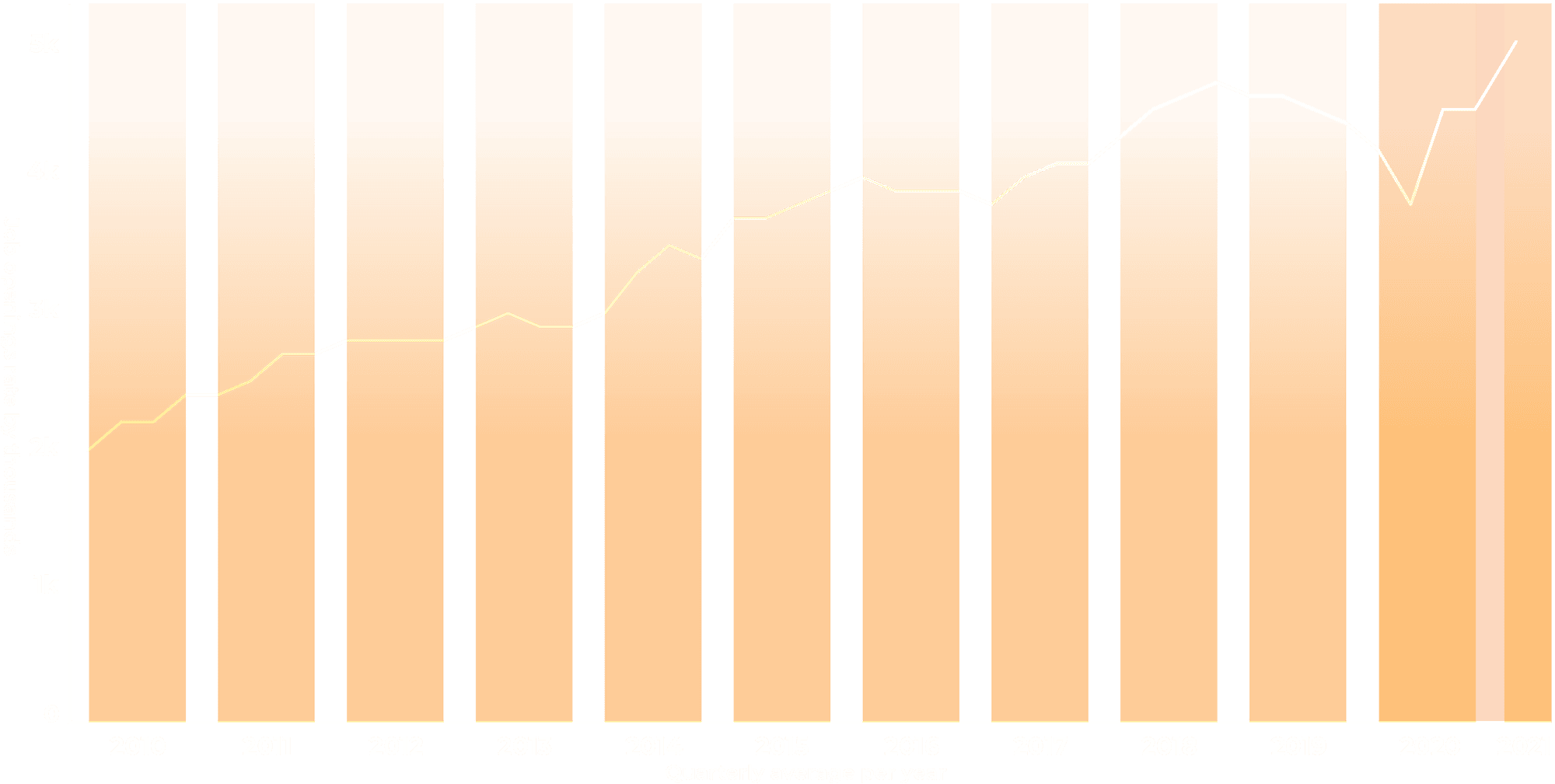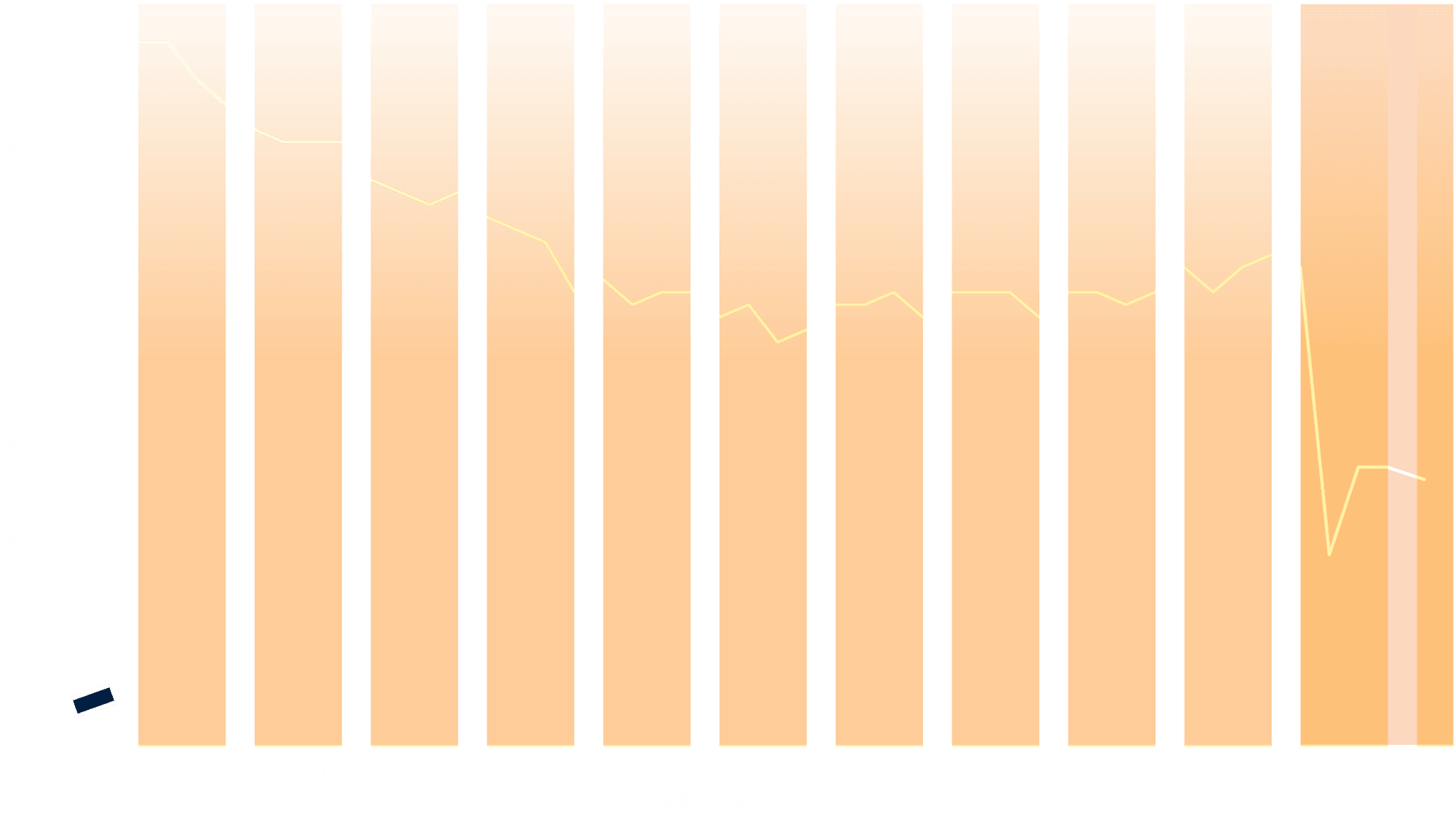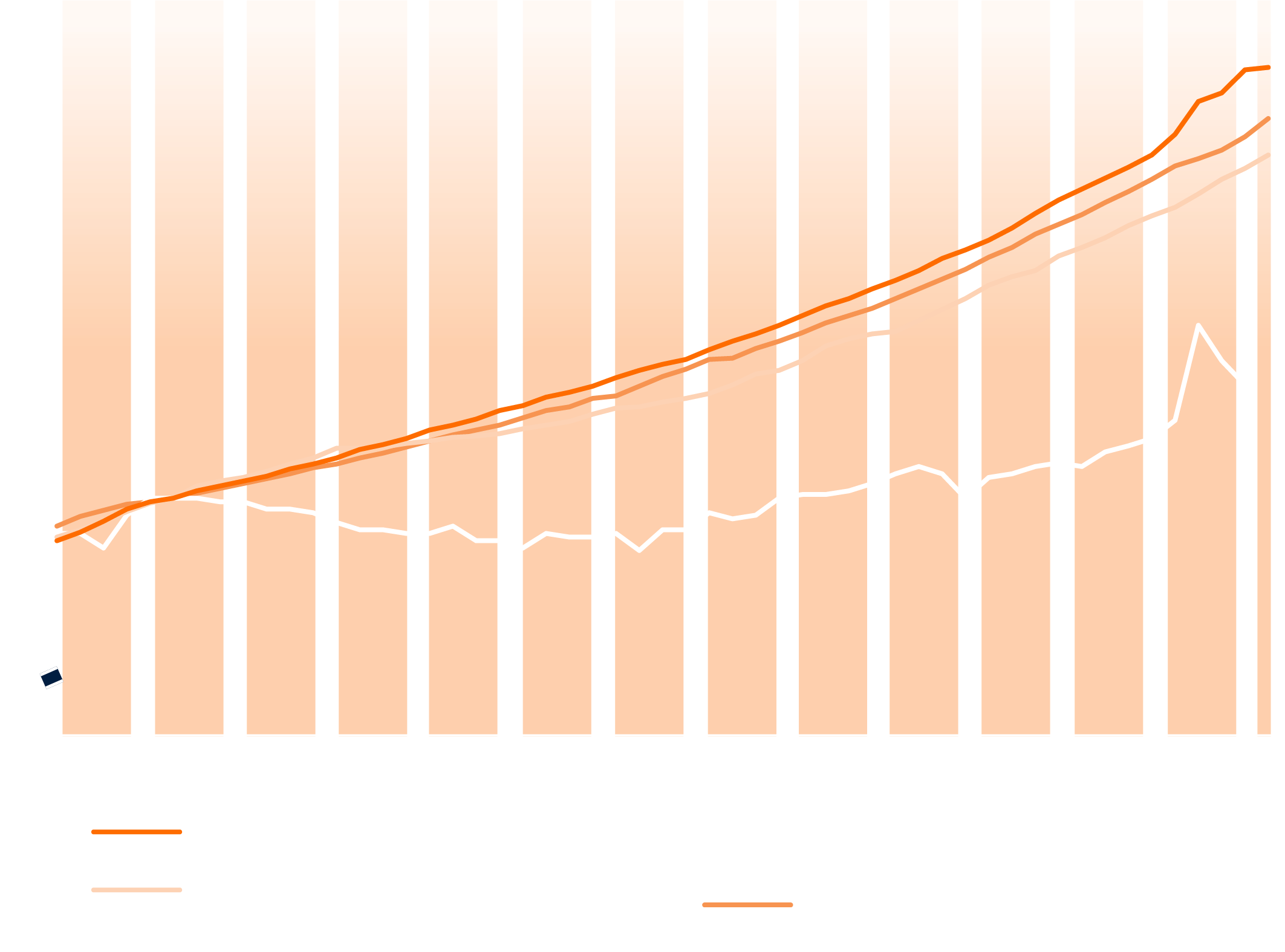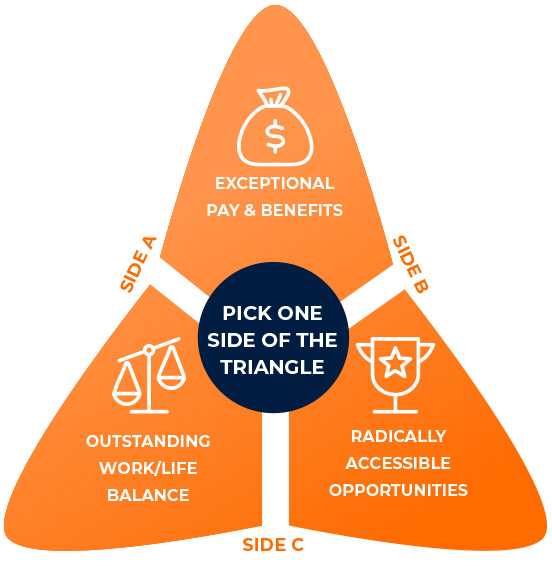
Does this scene sound familiar? You’re trying to meet production, but your workforce is creating chaos. It’s difficult to recruit workers to your team, and even when you do successfully find new team members, they leave abruptly. As a result of your company’s workforce instability, you are left juggling crises while falling behind on your production schedule.
It’s not just you. Something bigger is happening to America’s workforce that is impacting just about every employer in the U.S.
After a global pandemic, it seemed like things were back on track. Vaccine distribution was successful, the economy was recovering, and businesses were ready to hire again. But another issue was brewing for employers.
America is recovering from the pandemic and economic shutdown of 2020, but this is no normal recovery, and employers who want to succeed need to learn how to play a new game to survive in the new normal.
In the next few pages, we’ll explore the workforce factors employers will be navigating — and then telling you how to thrive in this new world.

The Economy is Recovering
America’s economy is not only recovering from the 2020 economic crisis — it is poised for big growth this year. Gold-man Sachs predicted the U.S. economy will grow a whopping 8% this year. Meanwhile, manufacturing is at its highest level since 2018. Economic growth typically correlates with the creation of new jobs, which is exactly what is happening.
Real GDP: Percent Change from Preceding Quarter
SOURCE: U.S. Bureau of Economic Analysis

Seasonally adjusted at annual rates
There are Many Open Jobs

Because the economy is growing and the world is making up for a partially lost year in 2020, companies are hiring — a lot. In fact, the current job openings rate is the highest in two decades. According to The Conference Board, the 2021 second-quarter survey found that 54% of CEOs planned to expand their workforce compared to 47% in the first quarter of 2021. This hiring spree would be great news, but unfortunately, there are fewer workers available than ever.
Job Opening Rates
SOURCE: U.S. Bureau of Labor Statistics

There are Fewer Workers
From April 2020 through Q2 of 2021, the labor participation rate has been stuck in lows not seen since the 1970s. In April 2020, the labor force participation rate plummeted to 60.2%, a low not seen since 1973. As of May 2021, the labor participation rate was 61.6%, a low not seen since 1976.
So, what does this mean? More and more Americans do not have jobs and are not searching for jobs. These individuals have given up on working, and statistically, many of them will never work again.
For the past 20 years, Americans permanently leave the workforce every time there is a recession. If this economic downturn of 2020 is anything like the past economic downturns, we may never recover the pre-pandemic labor participation rate of 63.3% (Feb. 2020). Employers may simply have to get used to recruiting from
a smaller pool of available workers for the foreseeable future.
Employers may simply have to get used to recruiting from a smaller pool of available workers for the foreseeable future.
Low Workforce Participation
SOURCE: U.S. Bureau of Labor Statistics

Unemployment Rates are Projected to go Down and Stay Down
Before the crises of 2020, workers had been dealing with record-low unemployment levels, which made it difficult for companies to recruit, since most workers already had a job. But, the economic downturn of 2020 did create a silver lining for employers who were still hiring: the unemployment rate was up, which meant more people who still wanted to work were unemployed and searching for a job.
Thus far, the unemployment rate has remained higher than pre-pandemic level. Unfortunately, those higher unemploy-ment rates probably aren’t here to stay.
The unemployment rate is expected to reach about 4% a year from now and decline further through the rest of 2022, making the worker recruiting and retention environment contin-uously difficult for companies to navigate.

Unemployment rate
SOURCE: U.S. Bureau of Labor Statistics

The Workforce Shortage has Caused the Following Conditions
The economy is bursting with open jobs and only a small pool of available workers. This has created a new (or at least exacerbated) set of factors employers will need to work around to succeed.
If you’re like most companies, you’ve probably already seen some of the factors at play (think open positions that feel all but impossible to fill and high levels of employee turnover).
For companies that need a stable workforce to meet production, retain customers, and be in the position to maximize opportunity — these workforce issues are creating big hurdles.
Below, we examine the factors employers have to contend with in the new normal.
It’s Hard to Fill Open Jobs
With lots of economic growth, there are lots of open jobs but relatively few available workers, so it’s no surprise a record share of small businesses cannot fill open jobs. According to the NFIB’s March 2021 report, small business job openings are at a 48-year record high as of March 2021. We can assume large corporations are similarly seeing some of the highest levels of unfilled jobs in recent history as well. Recruiting has never been more difficult in the modern era.
Unfilled Job openings
SOURCE: U.S. Bureau of Labor Statistics

More Employees Are Quitting
Over half of workers (52%) are looking for a new job according to research commissioned by the Achievers Workforce In-stitute. A year prior, only 35% of workers were looking for new jobs.
A survey by Yoh found those with high school degrees or less were even more likely to leave their current roles in 2021 — with only 21% of high school or less degreed workers planning to stay at their current job, compared to 40% adults with a college degree or higher.
For companies in the light industrial, manufacturing and hospitality industries, this means your core workforce is more likely to leave your company for a company offering them something better.
….your core workforce is more likely to leave your company for a company offering them something better.
Quits
SOURCE: U.S. Bureau of Labor Statistics

Hourly Pay is Increasing
Right now, we’re dealing with sky-high demand for workers but a low supply of workers. If you’ve ever taken an economics 101 class, you probably already know what this means: the cost of workers is increasing rapidly.
Right now, the hourly earnings of employees are soaring to new heights and are predicted to continue their upward momentum.
What does this mean for employers? Offering $15 per hour for hourly employees used to be a sure way of attracting employees. You were almost guaranteed to be offering more money than competitor companies, which attracted and kept great employees in your workforce. Now, in many markets, offering $15 wages simply means you’re just doing the bare minimum to not fall too far behind the marketplace wage curve. In fact, offering pay at or below the 50th percentile in your location for a position ensures you will either struggle to find workers or be constantly losing your workers to other companies offering more. Employers must now raise their hourly wages to compete for employees. To truly attract and keep great workers — employers need to strategically offer more.
Increase and Decrease in Wages
SOURCE: U.S. Bureau of Labor Statistics

Becoming an Employer of Choice: What do you Offer?
Right now, companies across America are dealing with a labor shortage that is hurting production, erasing profits, cre-ating reactive cultures, and preventing companies from maximizing opportunities. The rebounding economy offers many opportunities for employers, but employers can’t take advantage of these opportunities when they’re mired in uncertainty and chaos caused by workforce issues.
So, What’s Next? There’s Good News and Bad News.
The Bad News
Employers are up against big market factors that no one person, team or company can single-handedly solve. We are in an era of workforce change, and every person and company will have to deal with some level of workforce instability.
The Good News
One of the best ways to navigate the hyper-competitive war for workers is to give employees something they want, and something that outcompetes other local employers. In other words, to get employees to choose to work with you, companies must first become employers of choice.
How to Become an Employer of Choice
To better your odds of recruiting and attracting employees, you must determine how you can out-compete companies in your area with a better offer to employees. To do this, you must offer employees a combination of two of the following options (i.e., choose at least one side of the employer of choice trilemma).

Employer of Choice Trilemma:
Outstanding Work/Life Balance: This option gives workers the flexibility to take care of their personal life and/or provides a deeply fulfilling work environment. Common options include flexible schedule options, a generous PTO (paid time off) program, affordable on-site daycare, and a fun or inspiring work culture.
Radically Accessible Opportunities: This category is all about offering non-traditional workers the maximum amount of opportunities. For instance, companies choosing this option might offer a career advancement fast-track to employees with no prior experience, offer jobs to workers with recent felony convictions, or waive all employee drug tests.
Find Your Combination
To attract workers in this competitive environment, you will need to choose factors from the employer of choice trilemma that will set your job opportunity apart from other employers.
Becoming an employer of choice isn’t a simple one-and-done decision though. There’s a lot of strategy involved, especially since the workforce market is evolving rapidly. Your strategy must be an ongoing discussion influenced by market research, local data and subject-matter expertise. There are also other factors you must contend with, like how your sup-plier brands impact your brand as an employer of choice.
Ultimately, there’s no simple answer to today’s workforce issues, but with an employer-of-choice strategy and the right partnerships, it’s possible to navigate today’s workforce issues for maximum results.
Need Help Becoming an Employer of Choice?
Not sure how to be an employer of choice? We can help. We’re experts at navigating workforce instability and helping companies determine their unique workforce strategies. In the midst of complex and rapidly shifting workforce trends, Ōnin has the data, resources, expertise and creativity to guide you to your best workforce strategies so you can become an employer of choice.

